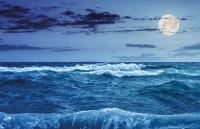 Add My Company
Add My Company
Sign In
Orkney Island’s Renewable Energy
15-02-2019

A Tip of the Hat to Our Northern Neighbours
In the early 1980s, the UK had the opportunity to become a leader in wind turbine technology and began research in Burger Hill on Orkney island. However, government funding was pulled, which allowed Denmark and Germany (backed by government funding) to emerge as world leaders and develop an industry around wind technology. To this day, most if not all of the wind turbines that operate in the UK are produced in Germany, even though we have the capability to build them domestically.
Fortunately, the Scottish government will not allow such a similar fate to occur. The nation has chosen to consider renewable energy development an economic opportunity rather than a chore. This shift in mindset has paved the way for major renewable energy accomplishments, such as last October when Scotland generated 98% of its electrical need from wind turbines. This tremendous feat can be partially attributed to the research and development taking place on the Orkney Islands.
The Orkney Islands & Renewable Energy
About 10 miles beyond the most northern tip of mainland Scotland lies an archipelago of around 20 inhabited islands. Now, upon first thought, you probably wouldn’t think that this northern region would be leading the UK in any significant way, but you would be wrong. The Orkney islands are at the forefront of a revolution in renewable electricity generation and now produce over 120% of their energy needs using wind, waves, and tides.
So, how have the Orkney Islands managed to become such a hot spot for renewable energy development? Well, much of that has to do with their unique location. The low-lying islands are exposed to both the North Sea and the Atlantic Ocean, which produces incredibly forceful winds and waves. It’s worth mentioning that these aren’t your average winds. No, these winds are strong enough to rip the roofs off of buildings, close down schools, and turn 700 micro wind turbines.
As with any energy source, renewable energy presents a unique set of challenges. While wind energy is more unreliable than tidal energy, underwater operating conditions can be very harsh and access for maintenance on tidal energy systems can be very difficult and costly. Fortunately, these challenges have not deterred Orkney residents from their goal of becoming emission-free.
The most recent challenge they’ve faced is a good one in that they must decide how to deal with their excess electricity production. There are three main options; use more electricity (i.e.: promote more electric car usage etc.), build a cable to export and sell energy back to mainland Scotland, or find a way to turn excess energy into renewable power. The last option is the most promising as research aimed at splitting water atoms into their elemental components (hydrogen and oxygen) is well underway. Why would we want to do that? Well, when hydrogen is split from tidal and wave energy it can be stored and used to generate electricity at a later date, or burned to generate heat, or, perhaps most interestingly, to charge hydrogen fuel cells.
Currently, this technology has only been used to power small-scale devices, however by 2021 Orkney aims to operate the first hydrogen-powered ferry. If successful, this would eliminate the need for diesel to fuel ferries between the mainland and Orkney islands, reducing their carbon footprint even further.
The KTR Connection
The Orkney Islands are home to the world’s leading testing facility for wave and tidal energy systems; the European Marine Energy Centre. Research and development teams come from across the globe to test energy generator prototypes. KTR was a supplier to one such company, Pelamis Wave Power, which produced the first offshore wave machine that successfully generated electricity to the UK grid. KTR’s flexible jaw coupling ROTEX played an integral part if the generation of electricity onboard the Pelamis project. Unfortunately, the power of the sea would prove to great for the giant Pelamis system and this particular technology has been abandoned for the present. Yet KTR pushes forward, supporting a variety of other renewable marine technologies, in the UK and abroad.
As the UK continues to strive towards the 2050 goal of reducing carbon emissions by 80%, wave and tidal energy could and should be utilized far beyond the Orkney islands. At KTR we’ve always been involved in connecting and advancing turbine and generator applications and we can’t wait to see what the future holds for wave and tidal technologies.
For more information on Orkney Island’s Renewable Energy talk to KTR U.K. Ltd
Enquire Now
List your company on FindTheNeedle.

